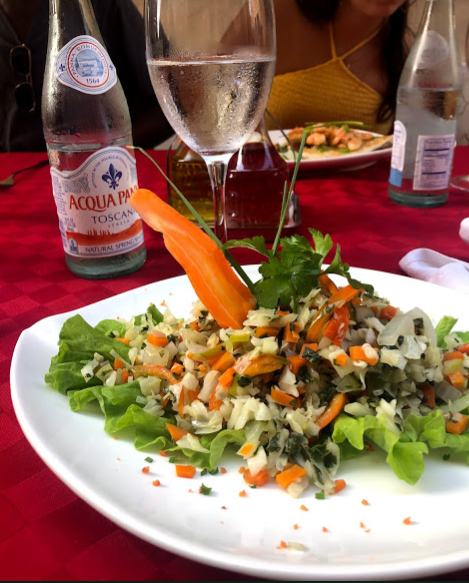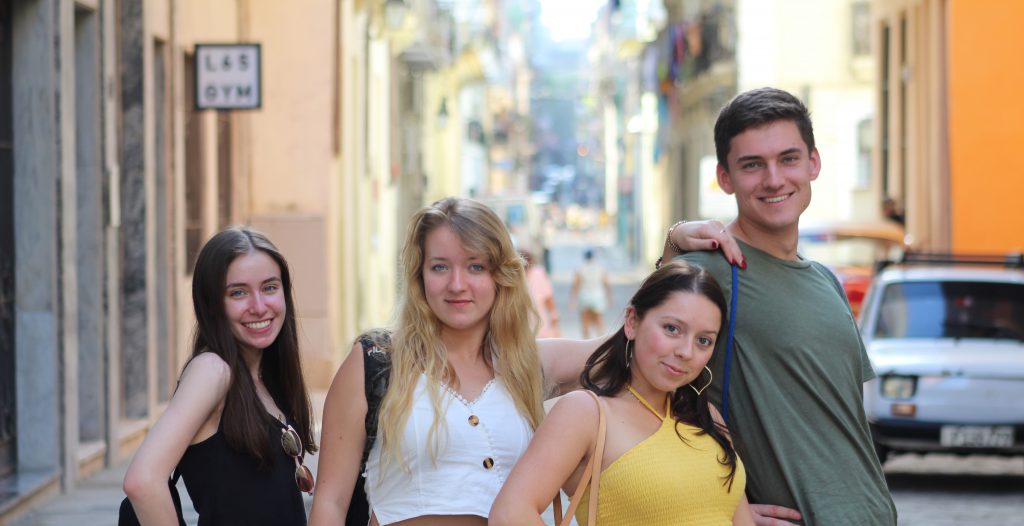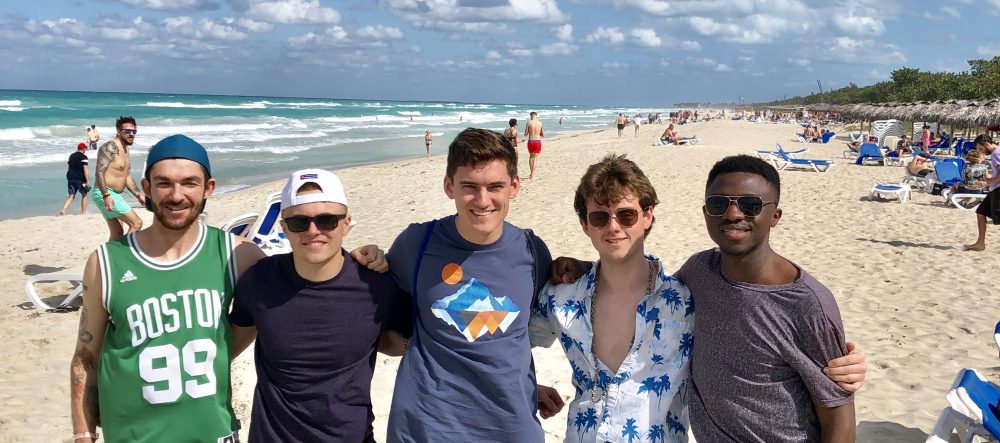On our seventh day in Havana, we visited a University Hospital, Policlinico Universitario Rampa. Here, we met with the director of the clinic and the board of directors. He explained to us that in Cuba, healthcare is free and available to anyone. We learned that this system of healthcare has improved the infant mortality rate drastically since the 1950s (Cuba has the lowest infant mortality rate in the Americas). About 30% of the state budget goes toward healthcare. This budget not only covers the care of Cuban citizens, but it also funds medical research and makes prescriptions very affordable (no prescription costs more than 20 pesos). The director also explained that, in Cuba, their “gateway” to healthcare is through family doctors. Family doctors are strategically placed within the neighborhood of their patients. You go there for checkups and any kind of health issue you may be having, if you need more specific care they will then recommend you to a specialist. He explained that their clinic breaks healthcare down into 4 main focus areas, health promotion, disease prevention, medical attention, and rehabilitation. When asked how the Cuban health care system differs from that of the U.S., he explained that in Cuba they try to focus on clinical diagnosis through developing a real relationship with the patient. They sit down next to the patient and converse with them to try to find the solution to their medical problem, then if they determine it is absolutely necessary they will utilize medical technology to assist in their diagnosis. Meanwhile, he said that in the U.S., medical technology can easily be exploited because we have such easy access to it. This can sometimes be a pitfall when it makes doctors less personal. This is because the doctor will use that technology to diagnose patients before they are able to spend enough time with the patient to get to know their situation. I thought that this was a very interesting approach to healthcare, where the personal relationship with the patient is a top priority.
After leaving the medical center, we headed back to the university to hear a lecture on education in Cuba. We learned that after the Revolution education became accessible to more people than ever before because of the Cuban Literacy Campaign. Before the revolution the literacy rate in Cuba was 75%, by December 1961 the literacy rate was almost 100%. To increase the literacy rate they took teachers from the cities (many were unemployed at the time) and sent them out to rural areas to educate. Also, in June of 1961, a teaching Nationalization law was passed, which universalized the curriculum in Cuba. Today, it is mandatory for children to go to school up until 9th grade. If students decide to continue their education, they can get up to their Ph.D. at no cost. It was clear that the Cuban Literacy Campaign had a lasting effect on academic achievement in Cuba.
After the lecture, we went to Old Havana to get lunch. While many waited in line to get coffee, Jimmy, Rachel, Easmond, Maria and I set out to find a good place for food. After walking out of the bustling square and into the quieter side streets, we found a beautiful place with outdoor seating. We sat outside right in front of a band who was playing. At one point they even came over to sing to us and let us play the maracas. It felt like a scene in an old Italian movie, just with a Cuban twist on the music.

My meal in Central Havana.
After lunch we found a churros stand. I was ecstatic because I have always wanted to try authentic churros (all I have ever had is the Cinnamon Toast Crunch churro cereal). For 1 peso all 5 of us were able to try them. Needless to say, I was blown away. We decided to take our time and walk back to where we were staying instead of taking a cab. We walked through central Havana and at almost every corner I was taken back by the architecture and plant life. The most beautiful area I encountered was when we were walking through the thickly settled streets and came out to a small park. The park had a few varieties of palm trees and other tropical plants, in the backdrop of these beautiful plants, you could see the capitol building. I have truly never seen such a beautiful city area. As we walked back into the crowded side streets I saw that Central Havana was a neighborhood with a great sense of community. People were out on the streets and socializing at every corner. I could have walked around Central Havana for hours just taking in the beautiful sights and lively sounds. It suddenly became real that we were in Cuba, and that everything I was experiencing was real.

After about an hour of walking, we arrived back at our Residencia in Vedado. I was glad we had some time before dinner to relax and talk about our day. This day made me realize how truly lucky I am to have the opportunity to travel here, Cuba is such a unique and lively place.

